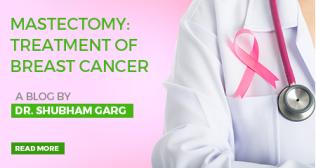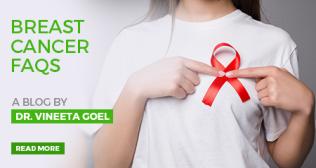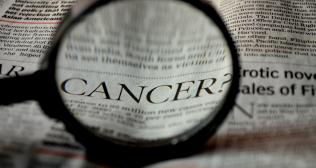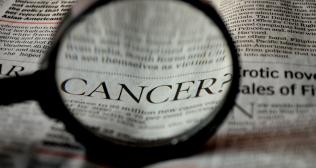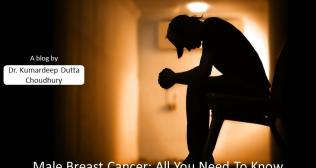
Understanding Cholangiocarcinoma: Symptoms, Causes, and Treatment Options
Deep within our digestive system lies a complex network of small tubes called the bile ducts. These vital pathways carry bile, a fluid essential for digestion, from the liver to the small intestine. When cancer develops in the thin layer of cells lining these ducts, it is known as cholangiocarcinoma, or bile duct cancer. This is a rare and often aggressive form of cancer that can be difficult to detect in its early stages.
Because the bile ducts are located deep inside the body, tumors can grow for some time without causing obvious problems. Often, the first signs only appear when a tumor becomes large enough to block a bile duct. This is why awareness of the subtle but significant symptoms is so crucial for an early diagnosis, which provides the best opportunity for effective treatment.
The Primary Cholangiocarcinoma Causes and Risk Factors
In the majority of cases, the specific trigger that causes the cells in the bile duct to become cancerous is unknown. However, medical experts have identified several key risk factors that are strongly associated with the development of cholangiocarcinoma. The most significant of these cholangiocarcinoma causes are conditions that lead to chronic inflammation of the bile ducts.
Conditions Causing Chronic Inflammation
- Primary Sclerosing Cholangitis (PSC): This is the most well-known risk factor. PSC is a rare disease that causes chronic inflammation and scarring of the bile ducts, leading to their hardening and narrowing.
- Chronic Liver Disease and Cirrhosis: Long-term damage and scarring of the liver from any cause, including chronic hepatitis B or C infection or alcoholic liver disease, significantly increases the risk.
- Bile Duct Stones and Abnormalities: The presence of stones within the bile ducts or congenital conditions like choledochal cysts (bile-filled sacs) can cause chronic inflammation.
- Liver Fluke Infections: In certain parts of Asia, infection with a parasitic flatworm called a liver fluke (often contracted by eating raw or undercooked freshwater fish) is a major cause of bile duct cancer.
Other Established Risk Factors
- Age: The risk of developing cholangiocarcinoma increases with age, with most cases being diagnosed in people over the age of 65.
- Obesity and Diabetes: These conditions are linked to an increased risk of several cancers, including bile duct cancer.
- Exposure to Certain Chemicals: Exposure to toxins like dioxins or nitrosamines has been linked to the disease.
The Different Cholangiocarcinoma Types
The cholangiocarcinoma types are classified based on where the cancer develops within the bile duct system. This classification is critical because it directly influences the symptoms, the surgical options, and the overall treatment plan.
Intrahepatic Cholangiocarcinoma
This type occurs in the smaller bile ducts located inside the liver. Because it grows within the liver tissue, its early symptoms can be vague, and it is sometimes mistaken for other types of liver cancer.
Perihilar (or Hilar) Cholangiocarcinoma
This is the most common type. It develops at the hilum, which is the crucial junction where the right and left hepatic ducts (which drain bile from the liver) meet to form the common hepatic duct. These tumors are also known as Klatskin tumors.
Distal Cholangiocarcinoma
This type develops in the portion of the bile duct that is outside the liver and closest to the small intestine. This section of the bile duct passes through the pancreas.
Recognizing the Cholangiocarcinoma Symptoms
The cholangiocarcinoma symptoms often do not appear until the disease is more advanced and a tumor is physically blocking the flow of bile. The signs are a direct result of this biliary obstruction.
The Most Common Warning Signs
- Jaundice: This is the most common and telling symptom. When bile cannot drain, the yellow pigment it contains (bilirubin) builds up in the bloodstream, causing a yellowing of the skin and the whites of the eyes.
- Itchy Skin (Pruritus): The buildup of bile salts in the blood can cause intense, widespread itching.
- Changes in Urine and Stool Color: The excess bilirubin is filtered by the kidneys, leading to dark or tea-colored urine. At the same time, because bile is not reaching the intestines to give stool its normal color, stools may become pale, white, or clay-colored.
- Abdominal Pain: A dull ache in the upper right side of the abdomen, just below the ribs, can occur as the tumor grows.
- Unexplained Weight Loss: Losing weight without trying is a common symptom of many cancers.
- Fever: If the blocked bile duct becomes infected (a condition called cholangitis), it can cause fever and chills.
The Path to an Accurate Diagnosis
Diagnosing cholangiocarcinoma involves a combination of blood tests, advanced imaging, and obtaining a tissue sample.
- Blood Tests: Liver function tests can show signs of a blocked bile duct. Blood tests can also check for a tumor marker called CA 19-9, which can be elevated in people with this cancer.
- Imaging Tests: An abdominal ultrasound is often the first test performed. More detailed images are then obtained using a CT scan or an MRI with a special focus on the bile ducts (an MRCP).
- Biopsy: A definitive diagnosis requires a biopsy—a small sample of tissue from the tumor that is examined under a microscope. This can be obtained in several ways, including during a procedure called an ERCP (Endoscopic Retrograde Cholangiopancreatography) or by using a fine needle guided by ultrasound or CT.
Navigating Treatment Options
The treatment for cholangiocarcinoma depends heavily on the type, location, and stage of the cancer, as well as the patient's overall health.
- Surgery: The only potential cure for bile duct cancer is surgery to completely remove the tumor. This is only possible if the cancer is found at an early stage before it has spread. The type of surgery depends on the tumor's location and can range from removing a section of the bile duct to removing a portion of the liver or pancreas.
- Liver Transplant: In very specific cases of early-stage perihilar cholangiocarcinoma, a liver transplant may be an option.
- Chemotherapy and Radiation Therapy: These treatments are often used after surgery to kill any remaining cancer cells. For advanced cancers that cannot be removed surgically, they are the primary form of treatment used to slow the cancer's growth and manage symptoms.
- Palliative Care: For advanced disease, the focus is on improving quality of life. This often involves procedures to relieve the bile duct blockage, such as placing a small tube (a stent) to keep the duct open and allow bile to drain.
The Importance of Early Consultation
Cholangiocarcinoma is a challenging disease, primarily because its symptoms often appear late. This underscores the critical importance of not ignoring persistent or unusual signs, especially jaundice or unexplained abdominal pain.
For individuals with known risk factors like chronic liver disease, regular medical check-ups and open communication with a doctor are vital. Early detection remains the most powerful factor in achieving a successful outcome against this rare cancer.
Frequently Asked Questions
1. Is cholangiocarcinoma a type of liver cancer?
Ans. While intrahepatic cholangiocarcinoma develops within the liver, it is a cancer of the bile duct cells, not the main liver cells (hepatocytes). It is treated differently from hepatocellular carcinoma, the most common type of liver cancer.
2. Can this cancer be prevented?
Ans. While you cannot prevent it entirely, you can lower your risk by taking steps to avoid the conditions that cause it. This includes getting vaccinated against hepatitis B, taking measures to prevent hepatitis C infection, and limiting alcohol to protect against cirrhosis.
3. Is cholangiocarcinoma hereditary?
Ans. Most cases are sporadic and not inherited. However, some rare genetic conditions can increase the risk, and having a family history of the disease may slightly increase your own risk.
4. What is the survival rate for cholangiocarcinoma?
Ans. The survival rate depends heavily on the stage at diagnosis. If the cancer is caught very early and can be completely removed with surgery, the outcome is much more favorable. For advanced, inoperable cancer, the prognosis is more challenging.
5. Is jaundice always a sign of cancer?
Ans. No. Jaundice can be caused by many other, non-cancerous conditions, such as gallstones, hepatitis, or alcoholic liver disease. However, it is always a serious symptom that requires immediate medical evaluation.








